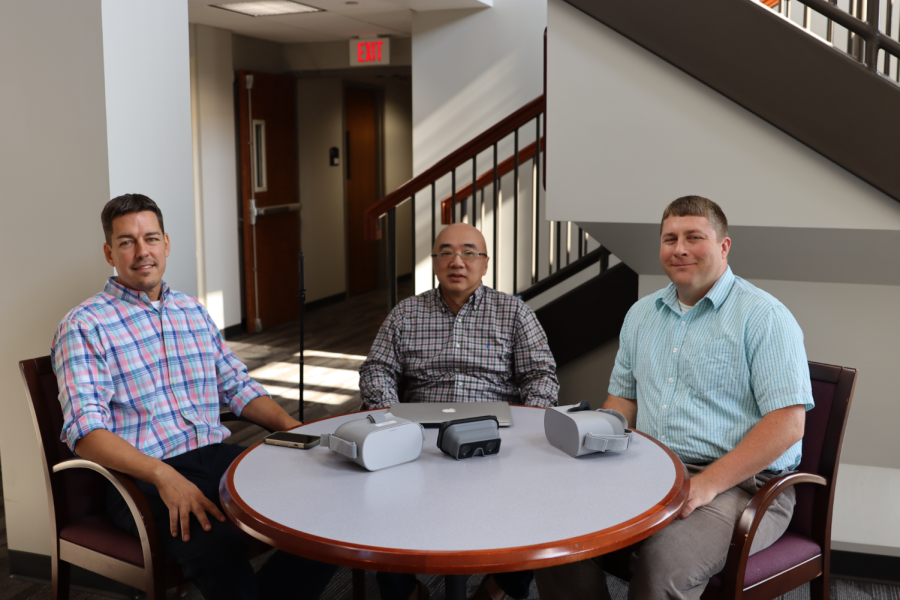Over $1.4 million awarded to fund teacher training videos
Professors Rick Ferdig, Cheng Chang Lu and Karl Kosko sit behind some of the technology that supports their project.
September 2, 2019
A set of Kent State professors recently received a grant of $1.48 million to fund their innovative video project.
Karl Kosko and Richard Ferdig, two of the professors who received the grant, teach at the College of Education, Health and Human Services. Cheng Chang Lu, the third investigator of the research team, teaches computer science at the College of Arts and Sciences.
The project, involving the use of 360-degree video, differs from standard teacher training videos because it has multiple cameras and point of views.
“The value of the 360-degree video is that you can record and experience — whether it be a police simulation, an aviation instruction or in this case teacher training —whoever is watching the video gets to control where they’re looking,” Ferdig said.
The team’s grant proposal was submitted to the National Science Foundation’s Discovery Research PreK-12 program. The project, titled “Design and Implementation of Immersive Representations of Practice,” is creating new ways to train future teachers.
After creating classroom videos in May 2018, the colleagues prepared their grant proposal for submission in fall later that year. After months of waiting, the professors heard back in July 2019.
“What will happen is that we (those who end up receiving grants from NSF) will receive some questions to clarify some of the details of the grant from NSF. And we received those questions Memorial Day weekend … so we knew that we had a good shot,” Kosko said.
Not only does the grant aid in teacher training videos, but it also complements the extended reality (XR) movement at Kent State. Extended reality can cover anything from 3D animations, virtual reality and augmented reality, Kosko said.
“There’s all these different, tiny little terms to describe very minuscule features of how we extend our reality,” Kosko said. “Extended reality is an umbrella term.”
The grant money will go toward staffing of the project and technology costs, but both Kosko and Ferdig agree that it’s important for other educators and researchers to be able to replicate the study.
“There’s a lot of costs in terms of making sure that this is something that other people could do without getting large sums of money,” Kosko said.
The two EHHS professors have no doubt this project will go far.
“In the long term, if we were to have a goal, it would be that we’d have a room where you could walk in and you put on some glasses or a headset and you’re physically walking around the classroom,” Kosko said.
Ferdig urges students and staff who are interested in developing tools and experiences for extended reality to reach out to him or his colleagues.
“The hope is that people around the world would start to see Kent State as a leader in understanding the conditions by which we know extended reality works,” Ferdig said.
Linden Miller is the Education, Health and Human Services reporter. Contact her at [email protected].

























